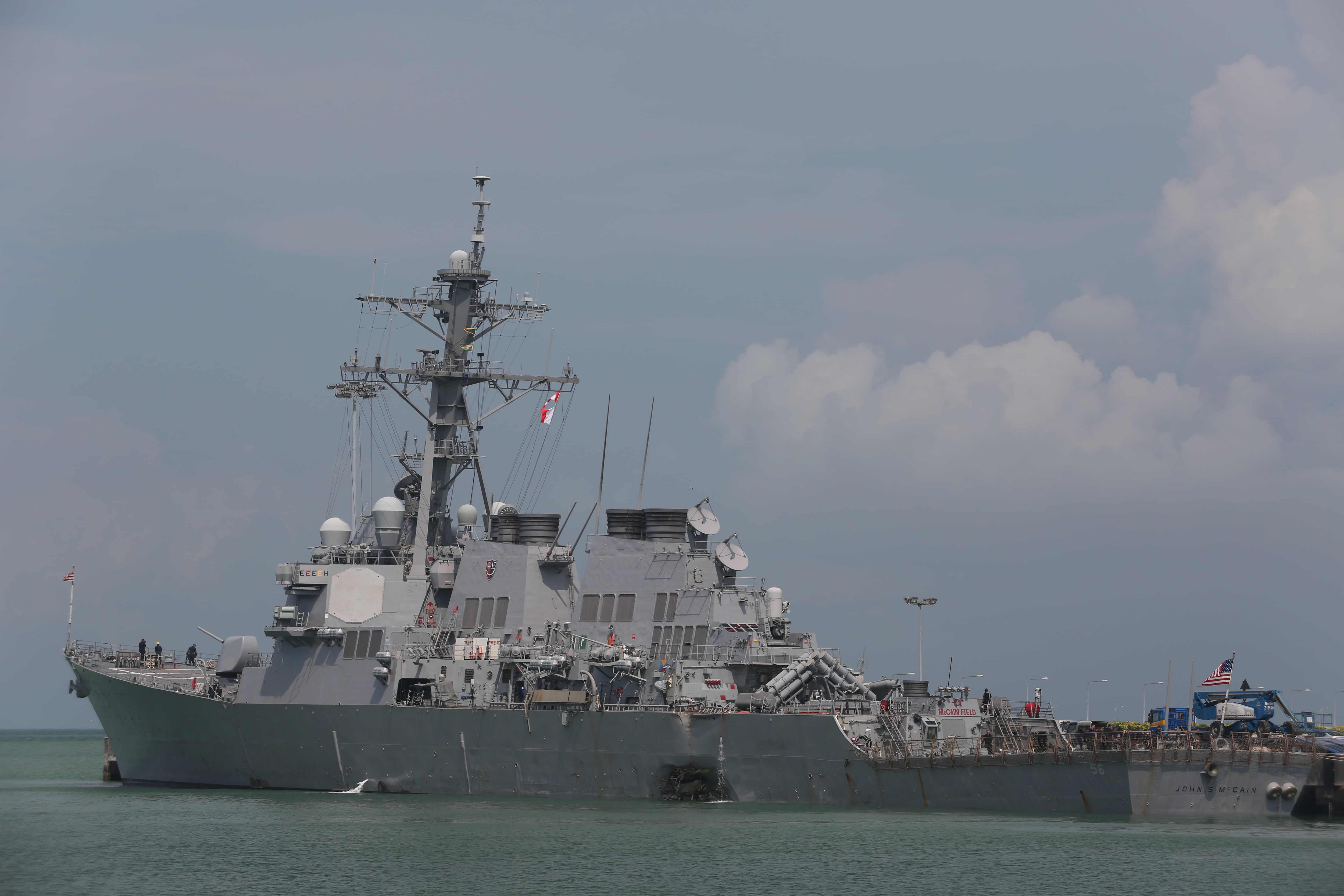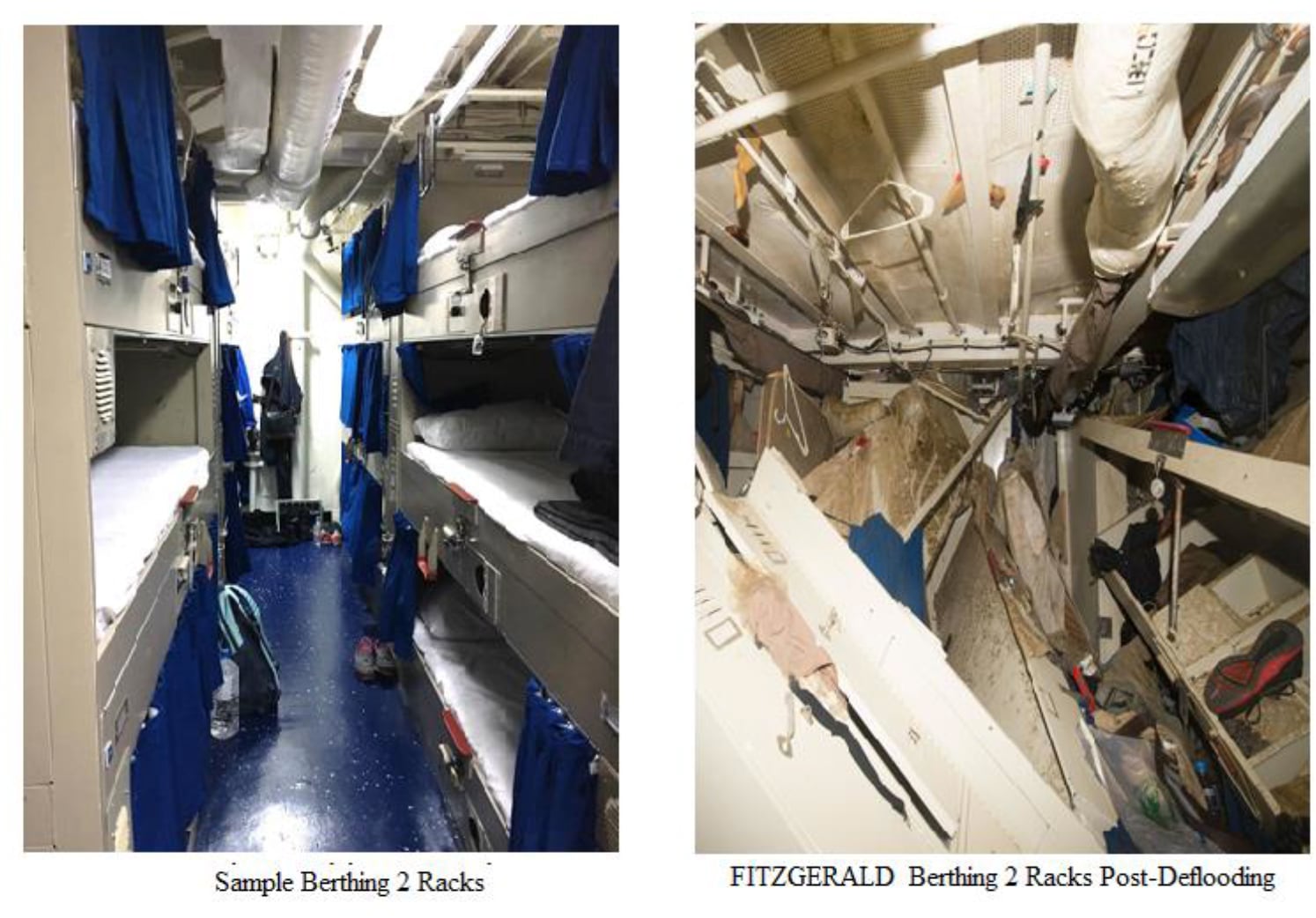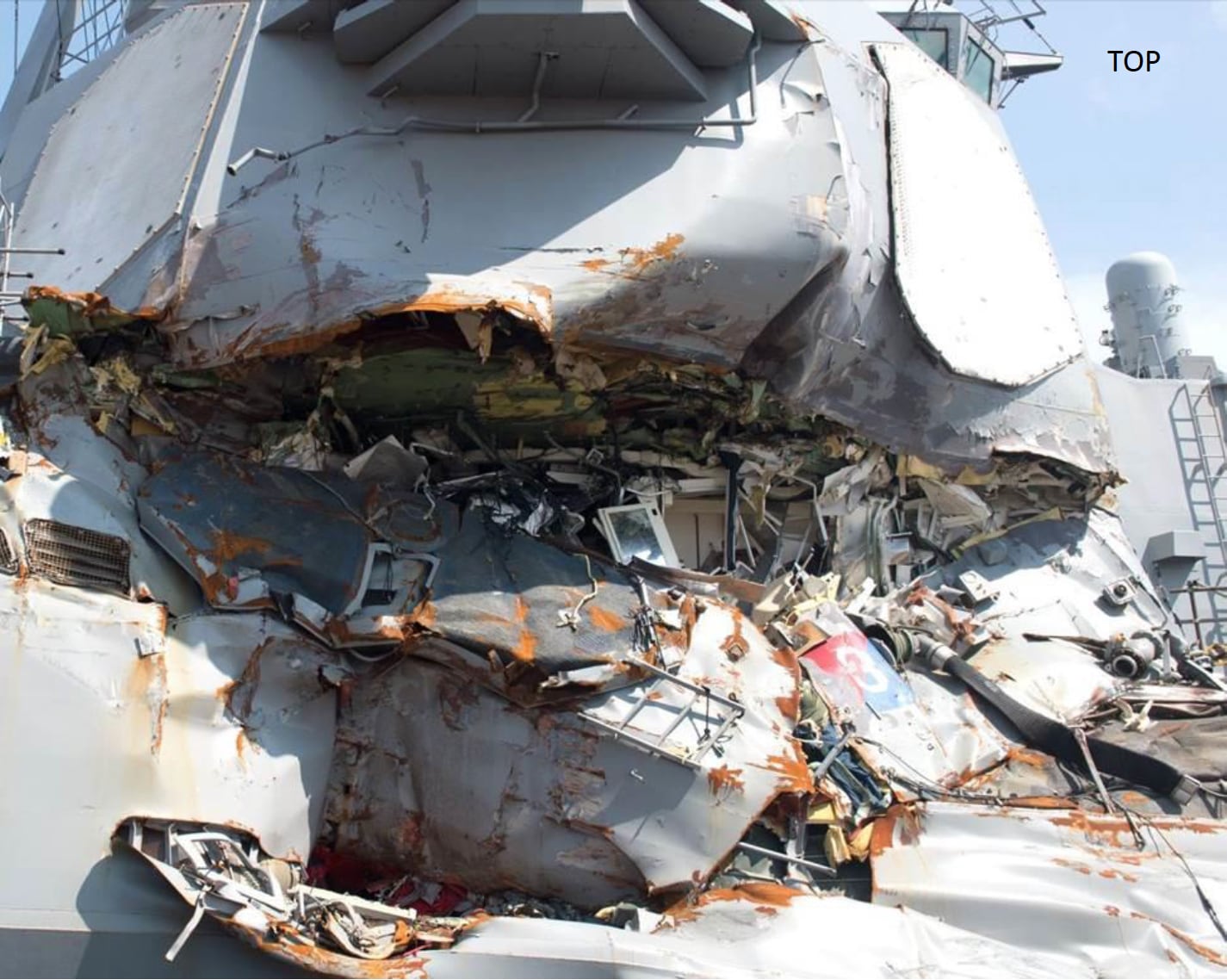The two Navy destroyer collisions that killed 17 sailors this summer were borne from decades of cultural dysfunction in the service, according to a strategic review released this week by Navy Secretary Richard Spencer’s office.
The new review also questions an initiative undertaken by today’s top officers for standing up a new command to oversee readiness in the troubled west Pacific waters of 7th Fleet.
Still, the report largely focuses on ending decades of cascading errors leading up to today’s overstretched force, and a failure to learn from mistakes.
“The readiness consequences identified in this report are not traceable to any single policy or leadership decision,” according to the report released by Spencer’s office Thursday.
“However, the cumulative effects of well-meaning decisions designed to achieve short-term operational effectiveness and efficiencies have often produced unintended negative consequences which, in turn degraded necessary long-term operational capability.”
The report says today’s training and readiness problems have stemmed from a Navy that cannot say no to the mission requests of combatant commanders, despite the Navy’s budget constraints and smaller fleet.
“Over time, the Navy’s ‘must do’ wartime culture was adopted for peacetime as long-term readiness and capability were sacrificed for immediate mission accomplishment,” the report states.
The review from Spencer’s office sought a higher-level take on service issues than the Navy leadership’s “comprehensive review,” which was released this fall and overseen by Fleet Forces Command head Adm. Phil Davidson. That report focused on assessing the tactical causes of the Fitzgerald and John S. McCain collisions that killed 17 sailors.
The review released from Spencer’s office takes a broader view of the Navy’s problems and was compiled by a group that included retired admirals, junior officers and defense experts, but not any current flag officers. It was headed up by Defense Business Board Chairman Michael Bayer and former Chief of Naval Operations and retired Adm. Gary Roughead.
The new review notes that the Navy in the past has claimed to learn important lessons from crises like this year’s ship collisions, but has often failed to implement its own recommendations.
“Navy history is replete with reports and investigations that contain like findings regarding past collisions, groundings, and other operational incidents,” the report states. “The repeated recommendations and calls for change belie the belief that the Navy always learns from its mistakes.”
RELATED

The report decries an over-bureaucratized Navy, where surface warfare officers are not allowed to develop needed expertise because they must pull stints in headquarters positions or other staff jobs to advance.
“With the growth of headquarters, and staff centric promotion parameters, staff service began displacing service at sea as a significant driver of officer career paths, assignments, and promotions,” the report states.
It also argues that the Navy needs to streamline command-and-control lines because too much bureaucracy has led to “misaligned authorities, complicated command and control responsibilities, and diffuse accountability structures.”
Spencer’s report is critical of Navy leadership’s decision in October to create Naval Surface Group West Pacific, another layer of command stood up to oversee 7th Fleet readiness in the West Pacific. Navy admirals said the new command will help eliminate ambiguities of authority, but Spencer’s review this week argues that it will do just the opposite.
“The Strategic Review does not concur with establishment of Naval Surface Group West Pacific,” the report states. “Standing up an additional oversight layer provides another headquarters staff and administrative control function that is likely to perpetuate ambiguous and conflicting authorities.”
RELATED

Spencer acknowledged that the new command is at odds with the report’s call for lesser bureaucracy. “I have to admit, it didn’t dovetail perfectly,” Spencer said at a meeting with reporters at the Pentagon. But he added that such initiatives will be reviewed.
“I’m not in a position to say we’re going to tear it apart,” Spencer said.
He said his office’s review is only a set of recommendations at this point, and that plans are being hashed out for which prescriptions to adopt.
“This is a big needle moment for the Navy and Marine Corps,” Spencer said.
Getting the Navy back on sure footing to adequately address the threats posed by so-called “near peer” military rivals like China — a conventional threat not seen since the Cold War — will require changes in everything from service culture to congressional oversight, according to the report.
The size of the Navy’s fleet has shrunk from more than 500 ships in the 1990s to about 275 today, yet the workload has largely remained the same, the report states.
To continue to fulfill its mission despite fewer ships, the Navy became an echo chamber of risky behaviors, according to the new report.
“Reinforcing these aberrant behaviors was the feedback that implied the risk being taken had little or no consequence — if the operation was a success, then the risk assumed must have been appropriate,” the report states. “The departure from a questioning culture prevented operators, leaders, and resource managers from stepping back and assessing accumulated risk and reinforced a mistaken confidence that operations remained within risk boundaries.”
Spencer echoed the report’s recommendations calling on Congress to reassess the Goldwater-Nichols Act, the 31-year-old legislation that stressed the branches operating jointly but took the service chiefs out of the direct chain of command.
Changing that law could offer more direct control and ownership of Navy assets, Spencer said.
RELATED

The report also laments too much congressional oversight, which includes reporting requirements, adherence to at least 20 environmental and safety regulations, as well as state statutes, executive orders and other federal regulations.
“Such compliance is resource intensive and frequently distracts leadership’s attention from its primary responsibilities,” the report states. “Responding to ever-increasing National Defense Authorization Act direction, environmental, safety, and acquisition requirements, as well as other legal obligations, requires significantly increasing involvement by the Secretary and the Chief of Naval Operations.”
The report recommends working with the Pentagon to seek relief “from excessively detailed external oversight and reporting requirements.”
As the Navy learns to say no, the report recommends the service “condition congressional and executive branch leaders to accept that the higher cost and time to achieve established readiness standards will mean less Navy presence worldwide.”
Spencer also said that the Navy will hold meetings with Congress’s armed services committees to delineate which Navy missions can be jettisoned to prevent overburdening the force, an idea he said lawmakers have voiced support for thus far.
The problems identified by the new report cannot be resolved by simply giving the Navy more money or by ending 2011’s Budget Control Act, often referred to as “sequestration.”
“Additional funding to increase capacity and maintenance can improve many aspects of readiness, but more money will not address the structural, organizational, training, and cultural facets that contribute just as significantly,” the report states.
Spencer said the training and cultural changes called for in the report are not cost-intensive in and of themselves, but also admitted the Navy will need more resources and a better funding and budget mechanism.
“It’s gonna be a food fight at the table,” he said.
Geoff is the managing editor of Military Times, but he still loves writing stories. He covered Iraq and Afghanistan extensively and was a reporter at the Chicago Tribune. He welcomes any and all kinds of tips at geoffz@militarytimes.com.



